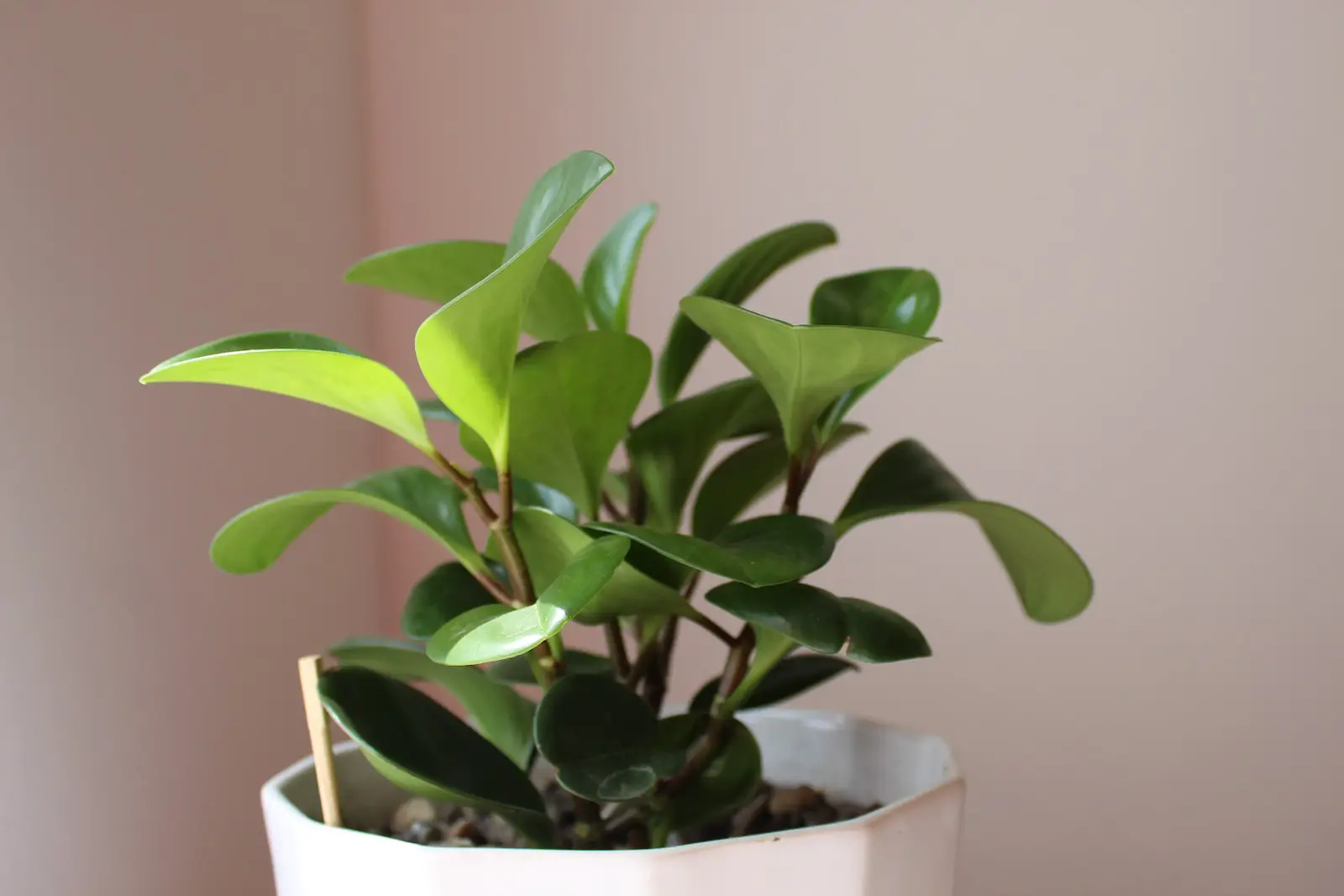Peperomia is a diverse genus of small houseplants that are loved for their ornamental leaves. Often referred to as “Radiator Plants,” the Peperomia species boasts over a thousand variations, each with unique leaf shapes, colors, and growth habits. These plants are known for their understated beauty, making them a popular choice for both novice and experienced gardeners.
Native primarily to tropical and subtropical regions, Peperomia plants have developed succulent characteristics, enabling them to store water within their thick leaves. This not only adds to their visual appeal but also makes them relatively low-maintenance. They’re adaptable and can flourish indoors with minimal care, adding a touch of the tropics to any living space.
What truly makes Peperomia stand out is its non-invasive nature. Unlike other houseplants that may grow quickly and require frequent pruning, Peperomia grows slowly and maintains a compact size. This trait makes it a fitting option for those looking to add greenery to small spaces like apartments or office desks.
| Aspect | Details |
|---|---|
| Common Names | Radiator Plant, Baby Rubber Plant |
| Botanical Name | Peperomia spp. |
| Family | Piperaceae |
| Plant Type | Perennial |
| Mature Size | 6-12 inches |
| Sun Exposure | Bright, Indirect Light |
| Soil Type | Well-Drained, Peat-based |
| Hardiness Zones | 10-12 |
| Native Area | Tropical and Subtropical Regions |
Peperomia Care
Peperomia care is relatively straightforward as these plants are quite forgiving. They prefer bright, indirect sunlight, and can tolerate a bit of neglect when it comes to watering. Overwatering, in fact, is one of the main challenges you may face with these plants.
The right soil is also crucial for Peperomia. A mixture that includes peat and perlite ensures proper drainage and provides the airy environment these plants love. It’s essential to let the soil dry out between waterings to avoid rotting and other water-related issues.
Light Requirement for Peperomia
Peperomia prefers bright but indirect sunlight. Exposure to direct sun can cause leaf burn and discoloration. East or North-facing windows are typically ideal locations. Artificial light can also be used effectively, making Peperomia a suitable choice for offices.
Soil Requirements for Peperomia
A well-draining, peat-based soil mix is optimal for Peperomia. It should include elements like perlite or sand to promote aeration. A standard orchid potting mix can also be used, particularly for the epiphytic varieties.
Water Requirements for Peperomia
Peperomia plants like to dry out between waterings, so overwatering should be avoided. Allow the top inch of soil to dry before watering again. Reduce watering during the winter months when the plant is not actively growing.
Temperature and Humidity
These tropical plants prefer temperatures between 65-80°F (18-27°C). Avoid sudden temperature changes and cold drafts. Peperomia appreciates higher humidity but adapts to average home humidity levels.
Fertilizer
Peperomia doesn’t require heavy feeding. Use a balanced, water-soluble fertilizer at half strength once a month during the growing season.
Pruning Peperomia
Minimal pruning is needed for Peperomia. You may trim off dead or yellowing leaves to maintain appearance and promote new growth.
Propagating Peperomia
Peperomia can be propagated through leaf cuttings or division. Simply cut a leaf with some stem attached, let it dry for a day, and then plant it in soil.
How To Grow Peperomia From Seed
Growing Peperomia from seed is rare and can be a slow process. It’s usually more practical to propagate from cuttings or purchase a young plant.
Common Pests & Plant Diseases
Mealybugs
These pests can be treated with insecticidal soap or neem oil.
Root Rot
Caused by overwatering; ensure proper soil and watering practices.
Common Problems With Peperomia
Drooping Leaves
A sign of overwatering or underwatering. Check soil moisture and adjust accordingly.
Leaf Spot
Caused by fungal infection; proper watering and air circulation can prevent it.
Pale Leaves
May be a sign of too much direct sunlight; relocate the plant if necessary.
Pro Tips
- Avoid overwatering; let the top of the soil dry between waterings.
- Use a well-draining soil mix with peat and perlite.
- Provide bright, indirect light for optimal growth.
- Be patient; Peperomia grows slowly but is worth the wait!




